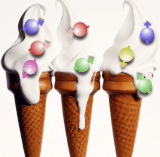Orateur
Description
Two central challenges in NISQ devices are the characterization and mitigation of the effects of noise. Originally introduced to analyze quantum random circuit sampling experiments, the linear cross-entropy benchmark (XEB) has emerged as a paradigmatic tool for characterizing noise in NISQ devices. A key question in the theory of XEB is whether it approximates the fidelity of the quantum state preparation. Previous works have shown that the XEB generically approximates the fidelity in a regime where the noise rate per qudit ε satisfies εN≪1 for a system of N qudits and that this approximation breaks down at large noise rates. Here, we show there is a breakdown of XEB as a fidelity proxy at a sharp phase transition at a critical value of εN. Next, we discuss the application of quantum error mitigation to reducing the effects of noise in current devices. Error mitigation relies on precise characterization of the noise, but the robustness of these techniques to noise characterization disorder are not well studied. We adapt an Imry-Ma argument to predict the existence of a disorder-driven error mitigation threshold for random spatially local circuits in two or more dimensions. We study these two noise-driven phase transitions using mappings of average two-copy quantities to statistical mechanics models of randomly driven quantum dynamics. We discuss implications of our results for tests of quantum computational advantage, fault-tolerant probes of measurement-induced phase transitions, and quantum algorithms in near-term devices.

